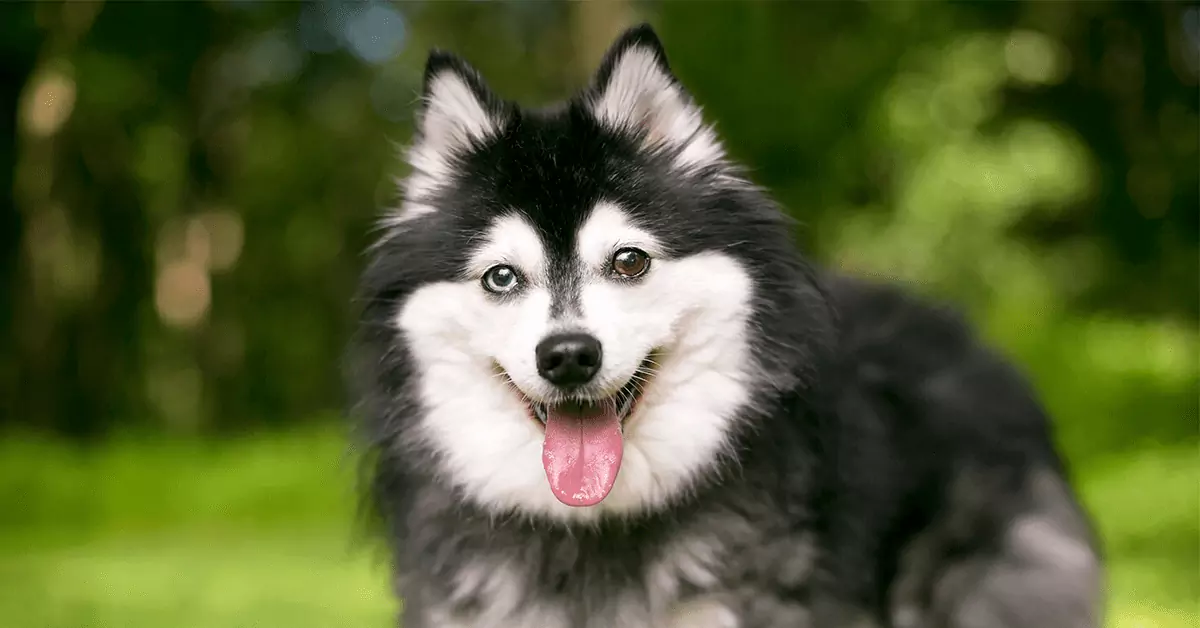
Meet the Alaska Klee Kai
High Doggy I.Q.
Protective Pooch
Cold-Weather Canine
My Many Looks
My Breed Characteristics
Furbulous Fact
As I Grow Up
History of My Breed
Care Tips
Training Tips
Personality
Playful
Loyal
Smart
Group
N/A
Origin
Wasilla, Alaska
Life Span
13-16 Years
Breed Popularity
Height Range
13 Inches and under (Toy) 13-15 Inches (Miniature) 15-17.5 Inches (Standard)
Weight Range
6-12 Pounds (Toy) 10-18 Pounds (Miniature) 16-25 Pounds (Standard)
Coat Details
Type
Medium Length
Texture
Wiry Top coat with Short Dense Undercoat
Features
Double Coat
Colors
Black & White, Gray & White, Red & White
Hypoallergenic
Cost to Buy
$1,800-$3,000
Lifetime Care Cost
My Many Looks
My Breed Characteristics
Furbulous Fact
As I Grow Up



History of My Breed
Care Tips
from Dr. Jessica Greenberg, Associate VeterinarianHave your puppy checked for heart murmurs.
While this is a relatively healthy breed, some young dogs have been diagnosed with heart murmurs that tend to disappear as they age. Have your puppy checked for heart murmurs, and also have them checked again once they turn one year of age.
Look out for cryptorchidism in male puppies.
Cryptorchidism is a condition where one or more of the dog’s testicles fail to descend in the scrotum. This is usually noticed by your veterinarian during puppy exams. Your veterinarian will continue to monitor the situation as your dog grows, but if the testicle(s) fail to descend, it will be imperative to have one or both removed surgically, as undescended testicles are predisposed to tumor development.
Have your pup evaluated for knee problems.
Some Alaskan Klee Klais are genetically predisposed to luxating patella problems, a heritable problem that may not be evident until the dog is older. Have your dog evaluated for luxating patellas by your veterinarian as a puppy or any time the dog is limping. Ask your breeder for a health guarantee against luxating patellas that provide a refund or cover the cost of care in case your dog develops knee cap issues.
Training Tips
from Dr. Jessica Greenberg, Associate VeterinarianFeed them by hand and through kongs.
The Klee Kai tends to be incredibly active and prone to anxiety if they don’t have a job to do. If you give them a bowl of food they might just end up guarding it which leads to a host of behavior problems. Try feeding them intermittently by hand throughout the day for listening to you. Additionally, if you have leftover kibble, put it in a kong. Those toy/food delivery devices are great for stimulating the jaw and keeping the Klee Kai occupied.
Use high reward treats to teach vital commands.
This breed isn’t the easiest to train, so make sure when you’re teaching them commands that you use a high reward treat. For a high reward treat to be effective, it's vital that your Klee Kai isn’t eating off the dinner table. (If your dog gets people food for free at dinner, that diminishes the value of everything else.)
Don’t expect perfection and reward them for good attempts.
Despite being whip-smart, the Klee Kai can be a challenge to train because of their short attention span and fierce independence. Ending training sessions by rewarding them for their effort is always a good practice, and Klee Kai’s will benefit from a patient parent who gradually shapes their behavior.
My Many Looks
My Breed Characteristics
Furbulous Fact
As I Grow Up
History of My Breed
Care Tips
Training Tips
-
Personality
Playful
Loyal
Smart
-
Group
N/A
-
Origin
Wasilla, Alaska
-
Life Span
13-16 Years
-
Breed Popularity
-
Height Range
13 Inches and under (Toy) 13-15 Inches (Miniature) 15-17.5 Inches (Standard)
-
Weight Range
6-12 Pounds (Toy) 10-18 Pounds (Miniature) 16-25 Pounds (Standard)
-
动物皮毛
Type
Medium Length
Texture
Wiry Top coat with Short Dense Undercoat
Features
Double Coat
Colors
Black & White, Gray & White, Red & White
-
Hypoallergenic
-
Cost to Buy
$1,800-$3,000
-
Lifetime Care Cost


